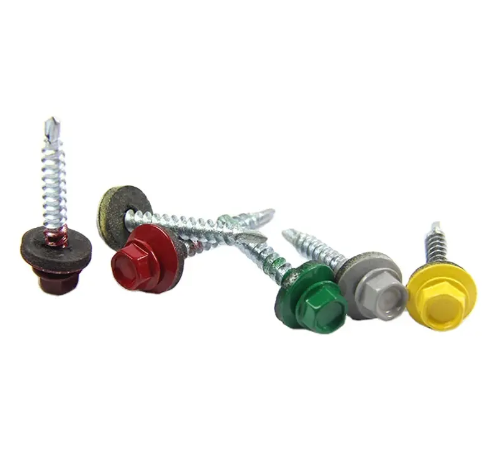Comparison of Wood Screws and Self-Tapping Screws for Various Applications in Construction
Wood Screws vs. Self-Tapping Screws A Comprehensive Comparison for Factory Applications
In the realm of fasteners, wood screws and self-tapping screws stand out as two of the most commonly used types, each serving distinct purposes and exhibiting unique characteristics. When it comes to factory settings, understanding the differences between these two types of screws can greatly affect the efficiency and effectiveness of various applications. This article explores the fundamental distinctions between wood screws and self-tapping screws, helping manufacturers make informed decisions about which fasteners to use in their operations.
Understanding Wood Screws
Wood screws are typically designed for fastening wood materials together. They possess a sharp tip, which allows them to penetrate the wood fibers easily, while the threads are spaced apart to provide a strong grip. The screw's construction usually features a tapered shank, which helps it to bite into the wood as it is driven in. For factory applications, wood screws are often utilized in the assembly of furniture, cabinetry, and other wooden structures.
One of the primary advantages of wood screws is their ability to provide strong mechanical connections in wood. They are available in various lengths and diameters, making them versatile for different projects. However, inserting wood screws generally requires pre-drilling a pilot hole, especially in harder woods or for larger screw sizes. This additional step can slow down production time, making it less ideal for high-speed manufacturing environments.
Self-Tapping Screws A Modern Solution
Self-tapping screws, on the other hand, are designed to create their own hole as they are driven into the material. This makes them particularly useful for a variety of substrates, including metal, plastic, and, to some extent, wood. The distinguishing feature of self-tapping screws is their unique thread design, which enables them to cut through the material without the need for a pre-drilled pilot hole. This capability dramatically reduces installation time and labor costs, making self-tapping screws highly appealing in fast-paced factory settings.
Self-tapping screws come in different variations, including thread-cutting and thread-forming types. Thread-cutting screws remove material as they are inserted, creating a female thread in the substrate. In contrast, thread-forming screws displace material to create a locking thread, which is particularly beneficial for softer materials like plastics. This diversity allows manufacturers to select the right type of self-tapping screw for their specific application.
Key Differences and Considerations
wood screw vs self tapping screw factory

When choosing between wood screws and self-tapping screws, manufacturers should consider several factors
1. Material Compatibility Wood screws are primarily intended for wood applications, while self-tapping screws can be used in various materials, including metal and plastic. If your factory deals with multiple materials, self-tapping screws may provide greater flexibility.
2. Installation Process Wood screws typically require pre-drilling, which can slow down production. Self-tapping screws eliminate this step, allowing for quicker assembly and improved efficiency.
3. Connection Strength While wood screws create strong connections in wood, self-tapping screws can provide secure fastening in various materials but may not offer the same level of strength in wood as a dedicated wood screw.
4. Cost and Availability Generally, wood screws are less expensive than self-tapping screws. However, the cost savings from reduced installation time with self-tapping screws can offset the initial expense in high-volume applications.
5. Applications Consider the specific applications within your factory. If your work primarily involves wood, wood screws may still be the best option. For assembling metal frames, fastening parts in machinery, or working with plastic materials, self-tapping screws may be more suitable.
Conclusion
In conclusion, both wood screws and self-tapping screws have their place in industrial applications, and the choice between them should be guided by the specific needs of the project at hand. Manufacturers should assess the materials they are working with, the installation process, and the desired strength of the connection. Understanding the nuances of each screw type will enable factories to enhance efficiency, reduce costs, and ultimately improve product quality. Making informed decisions about fasteners is crucial in achieving operational excellence in today's competitive manufacturing environment.
-
Top Choices for Plasterboard FixingNewsDec.26,2024
-
The Versatility of Specialty WashersNewsDec.26,2024
-
Secure Your ProjectsNewsDec.26,2024
-
Essential Screws for Chipboard Flooring ProjectsNewsDec.26,2024
-
Choosing the Right Drywall ScrewsNewsDec.26,2024
-
Black Phosphate Screws for Superior PerformanceNewsDec.26,2024
-
The Versatile Choice of Nylon Flat Washers for Your NeedsNewsDec.18,2024










